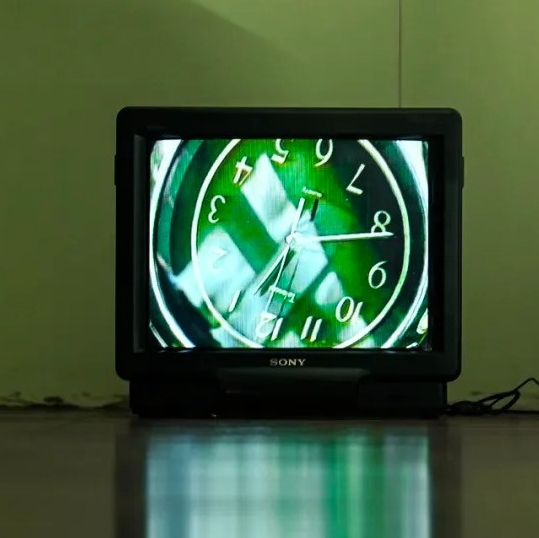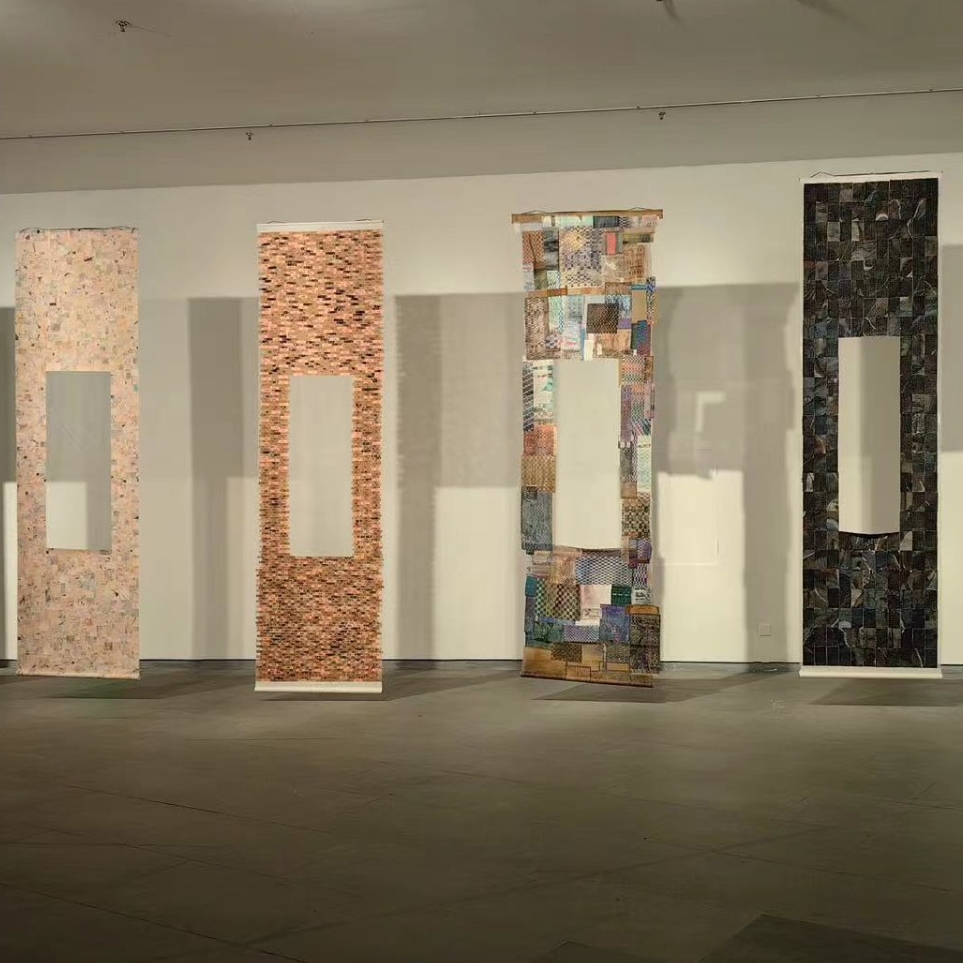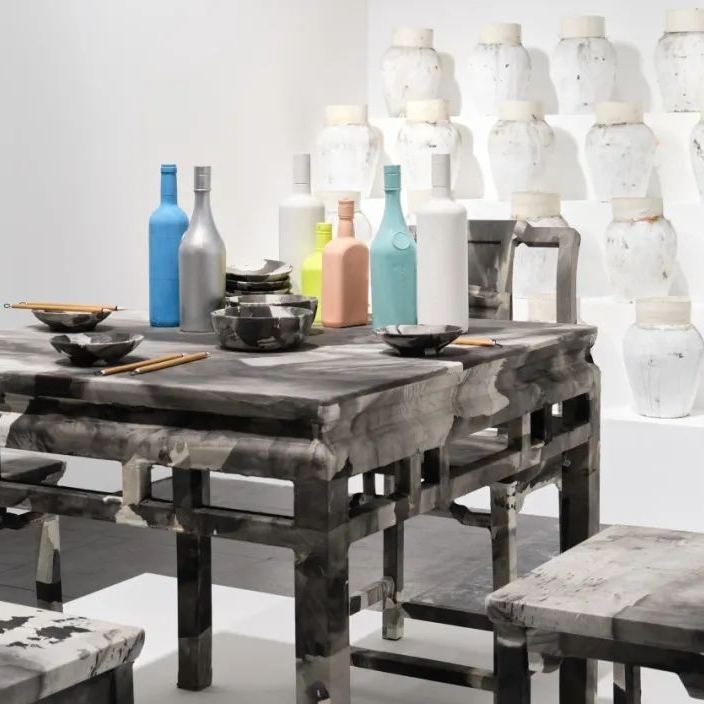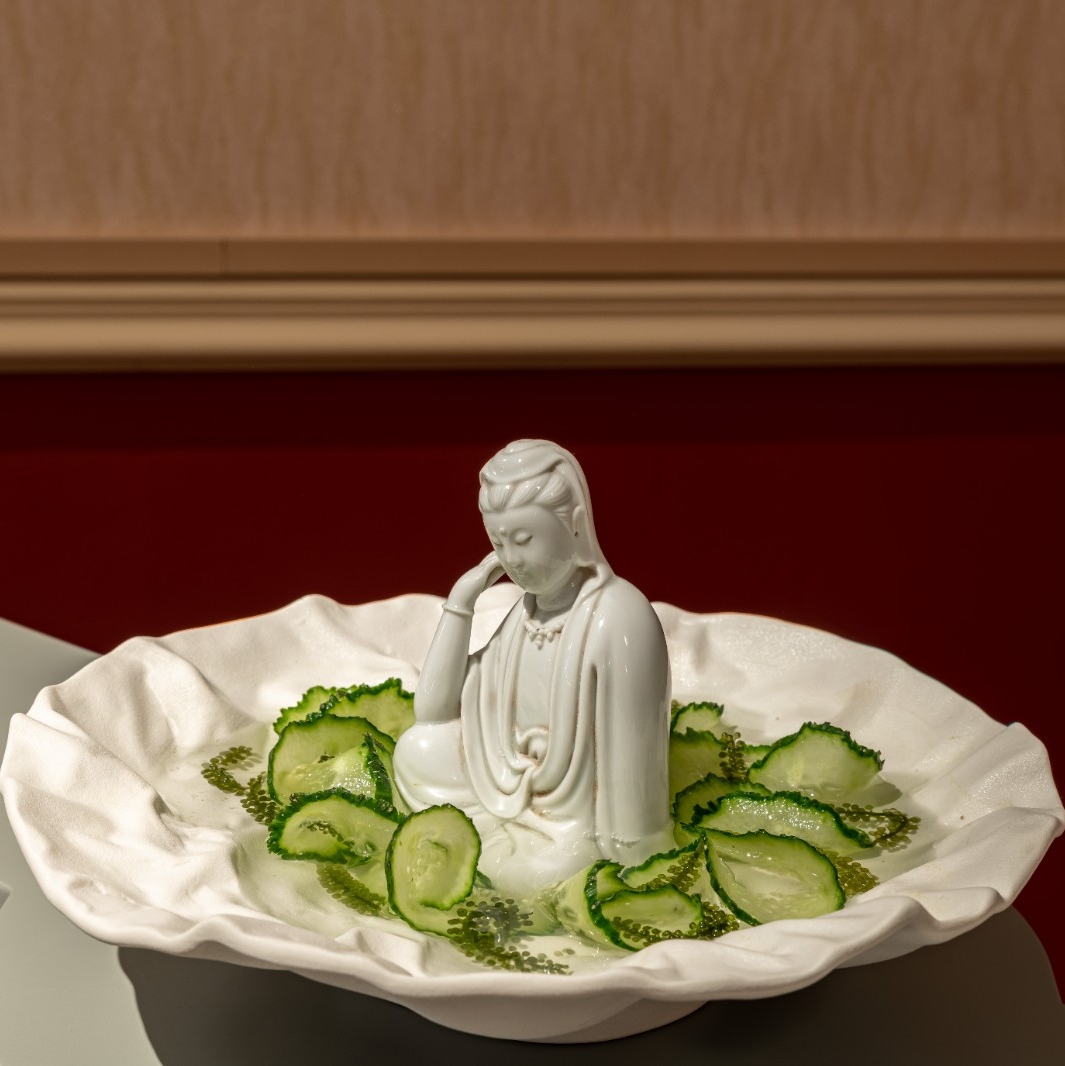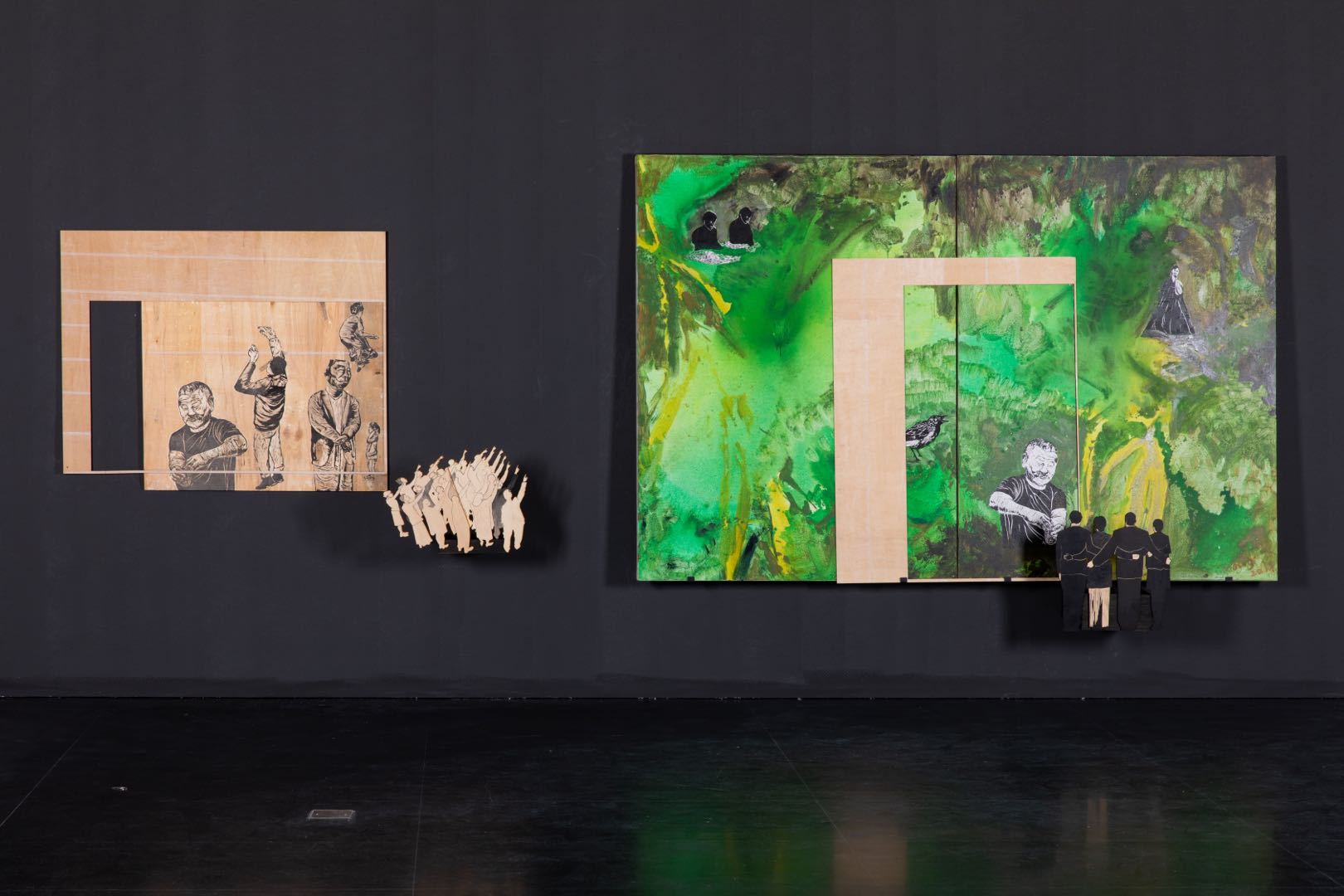
Work by Kang Jianfei
Kang Jianfei called this exhibition Temporary Stage because he had not yet decided on the final form of his own works before he started the exhibition. In other words, he did not finish his works until he started to set up the exhibition. The process of exhibiting was also the process of creating. Unlike general installation works, he did not have a complete composition or clear plan to assemble the works in advance. He conceived and assembled his works according to the specific space of the exhibition hall and the materials taken by him into the hall. In other words, his plan, composition and implementation were completed in the exhibition hall according to specific scenarios. Contingency and temporality superseded prior planning. This was not to say, however, that what he took into the exhibition hall were rough materials. On the contrary, these materials were finished works: they were either paintings on paper, a small ready-made product, a frame, a wood board, or a finished installation. They required little or no processing. Kang Jianfei only assembled them in the process of setting up the exhibition. In this case, the process of installation is the process of creation and assembly. These materials (or works) and other materials (works) are accidentally configured together. Due to the small size of the materials, they all look like small installations or collages. They are dazzling in the exhibition hall, but they do not produce a strong sense of volume.
These small installations and collages appear to be formed around images and the paintings themselves. Or rather, they are collages of various physical materials and painted images. They appear to be primarily paintings. They appear to be complex frames or additions to flat paintings. They imbue the paintings with a strong material ornamentation. They thus break up the flatness of the painting, filling the painting itself with ruggedness and bumpiness, and leaving the painting struggling in a complex and varied space of depth. On the other hand, however, because of the decoration, the small size of the collage materials largely reduces the three-dimensionality of the installation and maintains the material restraint. As a result, they look more like “paintings”, but with a large amount of material modification. The relationships between these materials and the images of the paintings are varied: a board has many completely different paintings pasted on it; a painting is incompletely covered by another; a painting has several different layers of frames; a painting suddenly blends in with its baseboard notch; a painting is pasted around with bits of paper; a painting is obscured and disturbed by various decorations. Kang Jianfei weaves some strange forms into his works by means of this peculiar form of decoration. We can say that these paintings here become “image-object”, or in other words, “object-painting”. In other words, these works do not so much direct our eyes to the pure image itself as to the materiality of the painting itself. This materiality does not refer to the materials of the paintings, but rather to the decorative and assemblage materials of the paintings, as well as the collage materials. Kang Jianfei attempts to draw attention to the assemblage relationship between the painted image and its decorative materials. The assembled materials and the image as well as the relationship between the two are also striking.
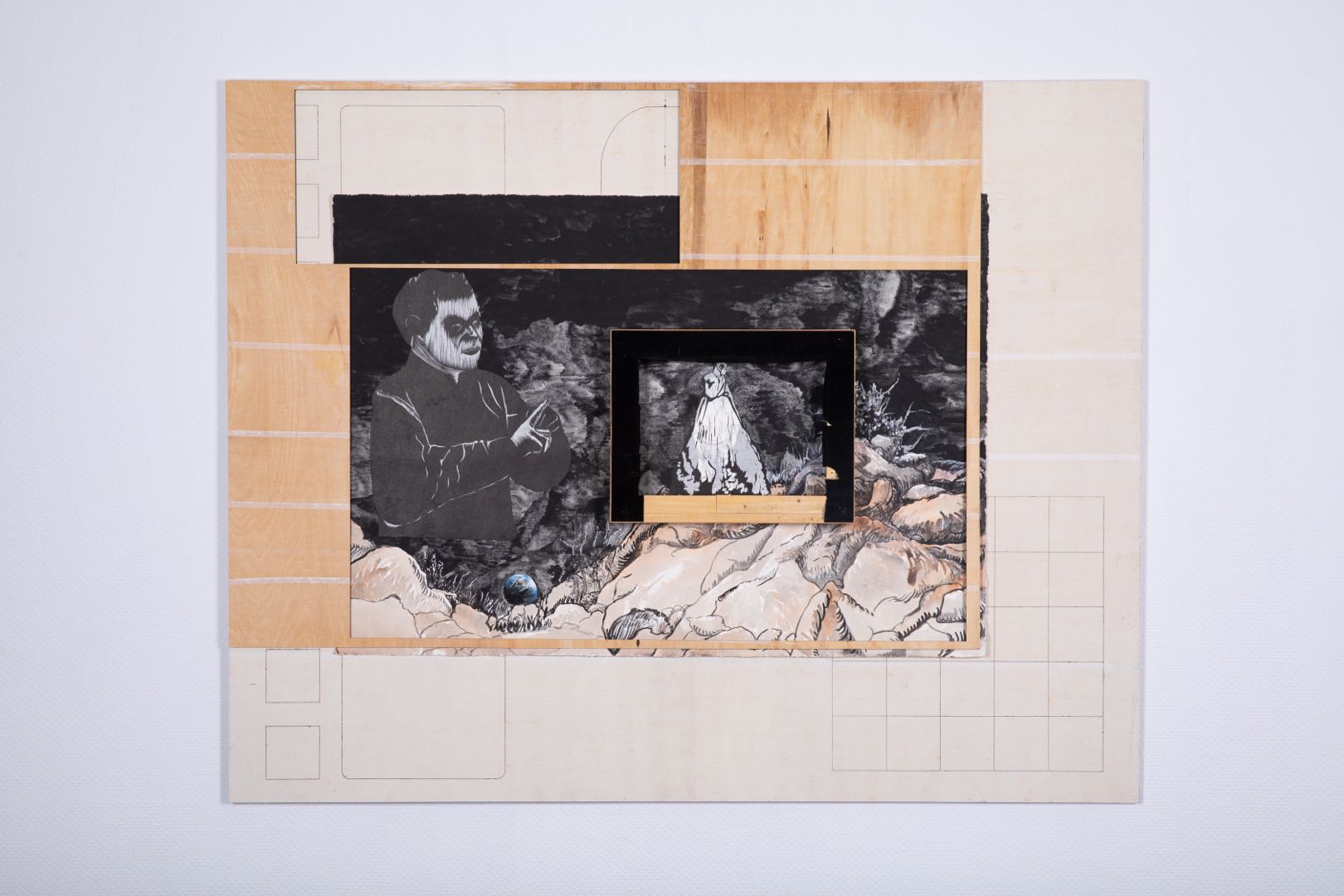
Work by Kang Jianfei
Of all these decorative substances, the most obvious is wood board. In almost all of his works, Kang Jianfei highlights the wood board as a prominent material. He uses the wood board as a background, as a frame, as a box to bear and load, as a collage object, as a display that has been cut off in part to reveal a pattern, or even as a mere installation material (there is an installation composed purely of wood, the only wood installation in the show). Wood boards are always stubbornly present. The boards are so striking that a strong woody atmosphere can be felt in the exhibition hall - this is even the reason for the softness of the exhibition. The large palette of wood boards overwhelms the variety of graphic colors. Not only does the board bring the scent of nature into the exhibition space, but it also carries its own light tones that are gentle and comforting. It is a kingdom of wood boards. It is light and natural, erasing the heavy, cold and industrialist atmosphere of the architectural space. The assembly and setting of such wood are not obligatory. The board does not engulf the object. It is present, spreading and dispersing everywhere, but it is not overbearing. There is no brutal assembly here. Kang Jianfei makes the whole exhibition hall light and loose. This seems to be an exhibition about the possibilities of wood boards.
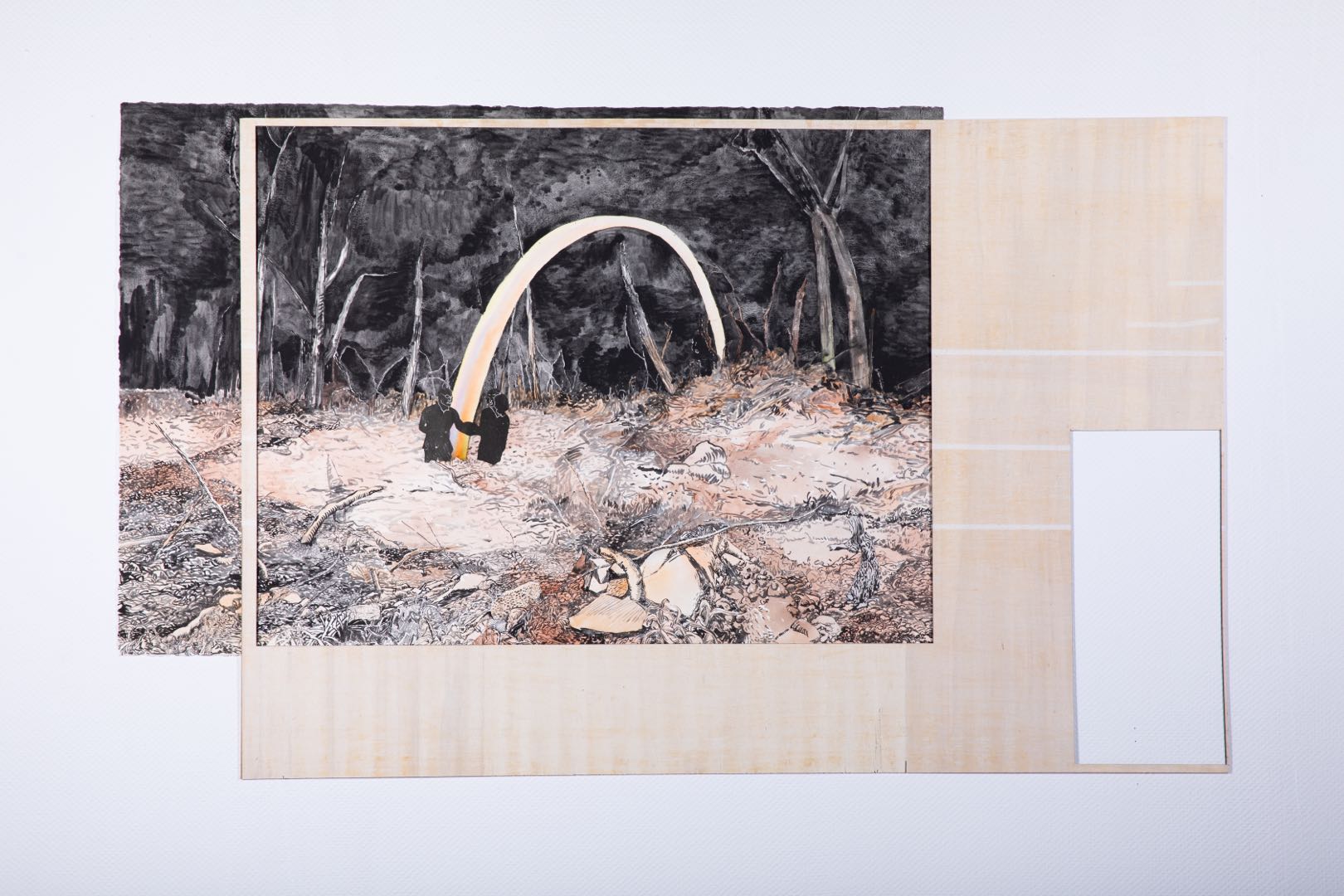
Work by Kang Jianfei
Why does Kang Jianfei use, expose and affirm so many boards? It is here that Kang Jianfei expresses his long-standing concern, namely, his reflection on printmaking. Printmaking has a long institutional history. Generally speaking, Chinese printmaking began to exist as a tool for reproducing information. It belongs to the category of printing, and it is a printing technique. It was only after the New Woodcut Movement that it transformed from a printing tool to a work of art. The prints in the New Woodcut Movement carried the characteristics of woodcut itself. It is this woodcut material that gives its images a unique style. In other words, the particular use of the material itself permeated the creation of the printmaking image itself, which was thus freed from the characteristics of mere recording and reproduction to become creative works with a dependence on the medium. Obviously, the specific materials of printmaking themselves determine the particular style of the works. This makes printmaking inseparable from the material medium in which it is made, and makes printmaking become works of art dependent on the medium. Although the traces of material medium are reflected in the final works, the materiality of the medium itself disappears from the finished prints, and the last thing one sees is the painting on a piece of paper. Once those engraving media have fulfilled their printing mission, they lose their function and meaning. They only function in the process of creation. They are valued only for the effect they cause, and for their role as a medium of creation. In the past, the media of printmaking were valued for its printing function of an image. Today, the media of printmaking are valued for its creative function of image initiative. Although the material media themselves participate in the creation, they are ruthlessly discarded once the creation is complete and once images are printed. The creation process will disappear once and for all from the creative works.
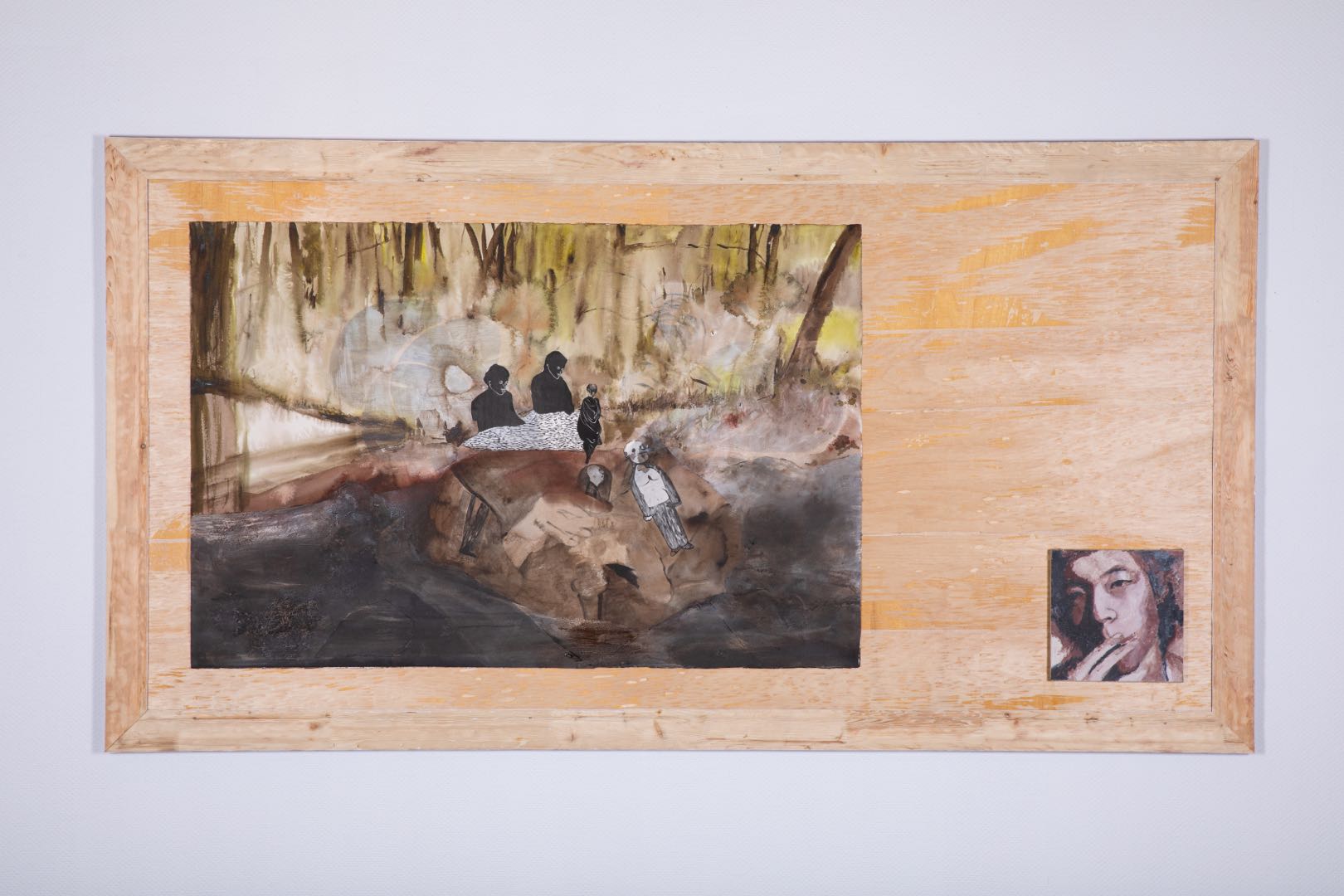
Work by Kang Jianfei
Kang Jianfei’s works are to reintegrate discarded materiality into his works. The discarded material of woodblock prints is recalled here - that’s why Kang Jianfei uses wood boards so much. He has experienced too many boards, worked with them all day long and learned all their secrets. He has a unique physical relationship with boards, similar to that of a woodworker with a piece of wood. In a sense, wood board means his way of life. I would venture to say that a woodcut printmaker has a special eye, knowledge and affection for the boards. However, these boards are usually a transitory casualty of the creative process. The artist will carve the board as an obstacle, go all out to conquer it, play games with it, subtly carve grooves into it, and use this groove as a medium image. Once the woodblock print is completed, the meaning of these boards is lost. They become remnants and are thrown aside like the drafts of a child’s composition before it is formally transcribed. Kang Jianfei re-presents these leftovers, presenting them as protagonists on a temporary stage. Here, the images do not overwrite, omit, or obscure them, but instead, the images wrap, bear, organize, and disrupt the autonomy. The wood board, as medium, as consistently sacrificial, and as long silenced by the image, now becomes the object, the target and the protagonist. Kang Jianfei allows the silent wood board to speak loudly here. He makes the board’s potential, history, interior quality, grain, color, hardness, deep secrets, materiality and his own secret connections with the boards speak loudly here. Once the board is free from its fate of being carved, it opens itself up to the vast and expansive space of an artist. This is an exhibition about wood boards, a phenomenology of wood boards.
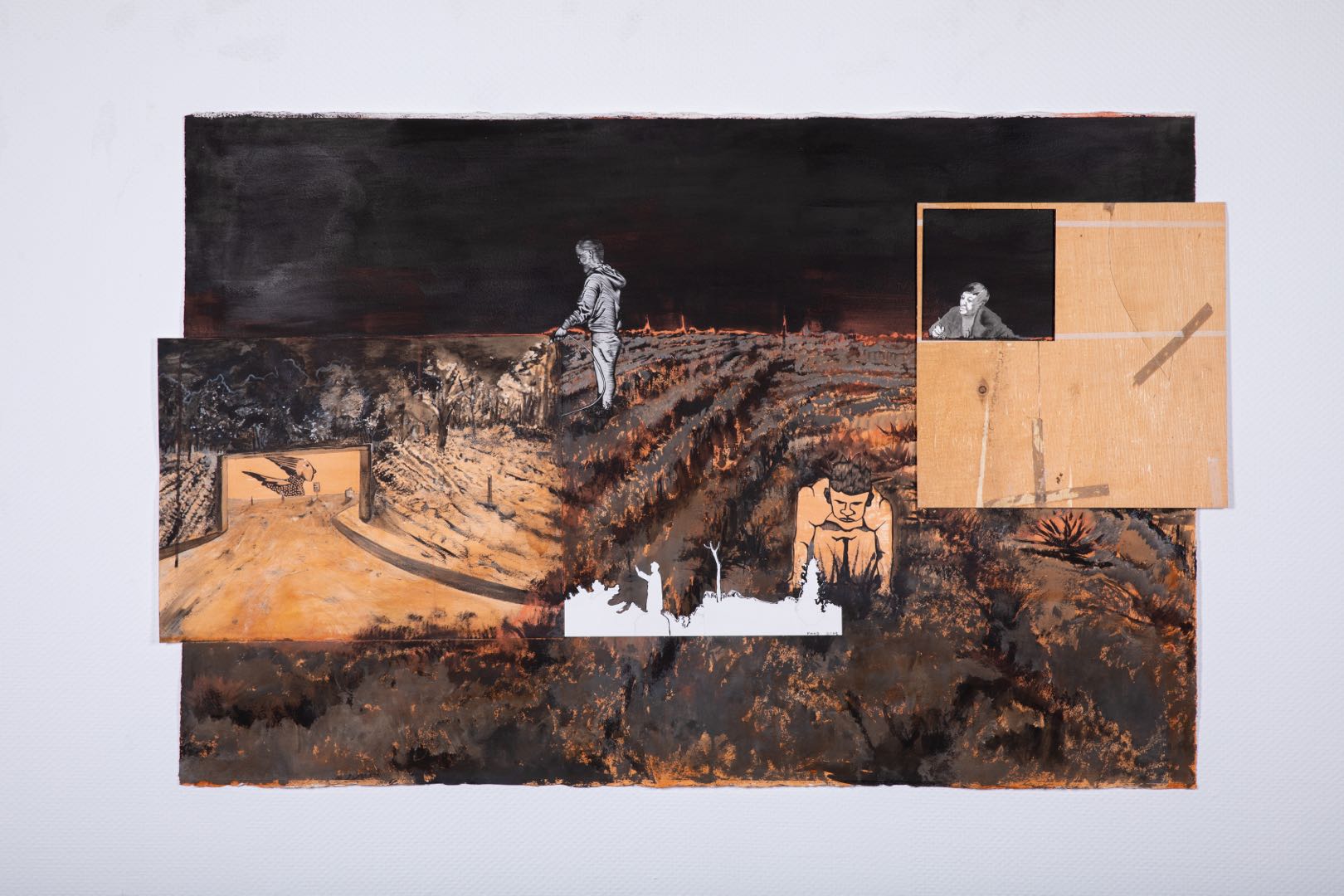
Work by Kang Jianfei
However, the board does not present itself alone. It acquires an autonomous destiny once it is freed from the medium of image copying and reproduction. Here, the board is combined and juxtaposed with various images, and it is no longer an anonymous tool hidden behind the reproduction of images. It is also combined with various other materials. It is even a self-assembly of various boards, even with the white wall on which it is hung (it hollows out a part of itself, exposing the white wall and thus forming a pattern with the wall). The board exhibits itself, and also comes to exhibit itself in various assembled relations. But on what basis does he allow the board to assemble with other objects and images? What principles are followed by all organizational associations? Based on his taste, habit, temporary sensations, appreciation of the space, all memories of the board, and inexplicable passion, Kang Jianfei completes his assembly. We can say that he follows the logic of his own feeling. But doesn’t this logic of feeling have a logic of the object itself? When one object is organized with another, is there not an intrinsic connection between the objects themselves? They are said to follow a logic of sensation, and it can also be said that this logic of sensation is laid down on the basis of the logic of the object’s own association. This combination is a multiplicity of relations superimposed on the relations of person and object, of object and image, and of object and space. Person, object, image and space are organized at a given moment: A board and a painting are organized together; a sheet of wood and a white wall are organized together; a board is organized with another board. Here, boards and boards, objects and objects, paintings and paintings form a network of relationships. There is a mysterious temptation between them. It is this temptation that makes them glue together; it is also this temptation that makes every element in the relationship equally important, no one element being decisive and dominant. It is in this mysterious temptation relationship between substances that we come to a new understanding of images: In an exhibition, the painted image is not so much a fantastic display of beauty and meaning for human beings as it is the protagonist of an endless game that unfolds with other things.
Photo Courtesy of Artist Kang Jianfei



